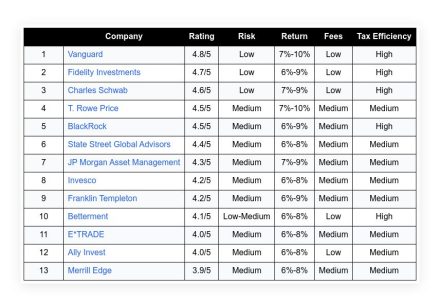Retirement isn’t a future date on the calendar; it’s a fundamental change in your life, your work, and how you define your days. The more foresight and preparation you invest in your life transition, the smoother and more confident it will be for everyone involved. During the final decade before retirement, there are several opportunities to take advantage of. By maximizing your savings, strategically reducing financial risks, and entering your post-work life with peace of mind, you can achieve financial stability.
It’s not about rigid rules, but about a progressive, actionable plan. So, here’s your ultimate 10-year retirement countdown broken down by year, with practical tips and essential milestones to guide you every step of the way. This will ensure that your retirement isn’t just a hope, but a well-executed reality.
Table of Contents
ToggleYear 10: Take Inventory and Set Goals – Your Retirement Vision Board
Ten years out is a great vantage point for taking a complete picture of your finances. Specifically, this is where you connect your aspirations with reality.
Begin by defining your retirement vision:
- How would you describe your ideal retirement lifestyle? Are you interested in traveling, hobbies, spending quality time with your family, or starting something new?
- Where are you going to live? Are you planning to stay put, downsize, or relocate completely?
- What will your daily life look like? You may volunteer, pursue a passion, or even continue working part-time.
After defining your vision, it’s time to assess your financial situation:
- Assets. Make a list of all your retirement accounts (401(k)s, IRAs, pensions), brokerage accounts, real estate, and any other significant assets you have.
- Income streams. Gather estimated Social Security benefits (found at SSA.gov), pension payouts, and other income sources.
- Debts. Identify all outstanding debts, including mortgages, car loans, credit card balances, and personal loans.
- Expenses. Analyze your current monthly expenses.
Your action plan. To consolidate this information, consider using digital tools like YNAB, Monarch, Empower, or a simple spreadsheet. We’re trying to achieve clarity here. The next step is determining how much income you need each year in retirement to support your desired lifestyle. In general, 70-80% of your pre-retirement income should be your goal, though adjust this according to your own goals (e.g., if you plan extensive travel, more will be needed). By focusing on this goal, you will have a North Star.
Year 9: Maximize Retirement Contributions – Accelerate Your Savings
Now that you have your retirement income target in sight, this year is all about putting the pedal to the metal. If you have not been maxing out your contributions to tax-advantaged retirement accounts, now is the time to do so.
Your action plan.
- 401(k)/403(b). As of 2025, the standard contribution limit is $23,500. If you’re 50 or older, you can contribute an additional $7,500 in catch-up contributions, bringing your total to $ 38,500. Don’t be afraid to push for as much of your employer’s match as possible. After all, it’s free money!
- IRAs (Traditional/Roth). The 2025 limit is $7,000, plus an additional $1,000 catch-up contribution for those 50 and older, totaling $8,000. To make the right choice, you need to understand the tax implications of each.
- Health Savings Account (HSA). If you’re enrolled in a high-deductible health plan (HDHP), you may be eligible for an HSA. These accounts offer a powerful three-way tax advantage: the possibility to deduct contributions, to grow tax-free, and to withdraw money for medical expenses tax-free. A health savings account can serve as an excellent way to save for retirement, particularly for healthcare costs.
Thanks to compounding, every dollar you save now has years to grow.
Year 8: Eliminate High-Interest Debt – Lighten Your Load
If you carry debt into retirement, it can significantly reduce your cash flow and create unnecessary stress. Your goal this year is to eliminate the high-interest obligations that have been burdening you systematically.
Your action plan.
- Credit cards and personal loans. Most of the time, these are the biggest culprits. As such, if you have any outstanding balances, pay them off aggressively. To build momentum, consider debt consolidation strategies, such as the “debt snowball” (paying off the smallest debt first) or the “debt avalanche” (paying off the debt with the highest interest rate first).
- Mortgage strategy. Develop a clear plan for your mortgage. Are you planning to pay it off before retirement to free up significant monthly cash flow? Or, if you have a low interest rate, do you intend to carry it into retirement, perhaps using your savings for something else? Although there is no single right answer, understanding its impact on your future budget is crucial.
- Auto loans. In addition to being generally lower in interest than credit cards, paying off auto loans early can also result in significant savings during retirement.
You should aim to enter retirement with as little financial burden and stress as possible.
Year 7: Estimate Your Retirement Income – Bridging the Gap
With a clear picture of your current finances and active savings, it’s time to figure out how much your potential income will be when you stop working. This year, you will need to determine if your financial reality aligns with your vision.
Your action plan.
- Social Security. If you have not already done so, create a profile at SSA.gov. It’s here that you can view your personal earnings record and benefit estimates based on your claiming ages (e.g., age 62, full retirement age, age 70).
- Pension benefits. For more information on your vested benefits and payout options if you have a traditional pension, please contact your former employer’s HR department.
- Investment income. Estimate your potential income from 401(k)s, IRAs, brokerage accounts, and any other investments. To estimate this, you could use a withdrawal rate (e.g., 4% of the value of your portfolio each year).
- Other income. If you plan to work part-time in retirement, factor in projected rental income or projected annuity income.
You can compare your projected income streams to your estimated retirement expenses (from Year 10). Don’t panic if there’s a shortfall. It’s still possible to adjust your lifestyle expectations, whether that means increasing savings or adjusting your retirement age.
Year 6: Revisit Your Investment Strategy – Adapting to Your New Horizon
The relationship between you and investment risk naturally changes as you approach retirement. When you’re just a few years away from needing that capital, you may not want to use aggressive, growth-heavy strategies that made sense in your 30s or 40s.
Your action plan.
- Rebalance your portfolio. Start shifting your asset allocation strategically. In general, this means diversifying your portfolio to include more bonds, income-producing investments (like dividend stocks or real estate investment trusts), and potentially less volatile funds.
- Maintain growth (but wisely). You shouldn’t completely give up on stocks. For a long retirement, you’ll need your portfolio to grow, at least moderately, to keep up with inflation. In terms of growth, though, more conservative approaches are desired.
- Seek professional guidance. Financial advisors who specialize in retirement planning are an ideal resource at this time. In addition to analyzing your current portfolio, they can help you design a personalized retirement strategy that meets your income needs and aligns with your retirement timeline. Additionally, they can provide guidance on diversification and potential tax implications associated with rebalancing.
With this strategic shift, your accumulated wealth can be protected while still allowing for long-term growth.
Year 5: Health Check – Literally and Financially & The Mid-Decade Review
In retirement, healthcare is likely to be your largest and most unpredictable expense. To plan for these costs, it is crucial to know where you are in your 10-year countdown and where you are at this midpoint.
Your action plan.
- Review your current coverage. Check out your existing health insurance plans (employer-sponsored or private). Learn about your deductibles, copays, out-of-pocket maximums, and coverage.
- Estimate future costs. Get a realistic estimate of future healthcare expenses in retirement using online tools and resources (such as Fidelity or the Medicare website). Don’t forget to include potential out-of-pocket expenses, prescription drug costs, and long-term care costs.
- Research Medicare. As you approach 65, begin researching Medicare eligibility, enrollment periods (typically 3 months before, 3 months after, and 3 months after your 65th birthday), and the different parts (A, B, C, D). Also, become familiar with Medigap (supplemental) or Medicare Advantage plans.
- Consider long-term care insurance. This is a big decision. Consider your budget, health, and family situation when choosing LTC insurance. Even though it’s costly, it can provide crucial coverage for services not covered by Medicare.
Mid-point financial check-up. As a formal progress report on your financial goals for Year 10, use this year to evaluate your success. Are you on track with your savings? Have your debts shrunk as planned? If you are behind on your contributions, trim your expenses, or adjust your projected retirement date within five years. Most importantly, you don’t need to be ashamed of this honest assessment.
Year 4: Rehearse Retirement – The Trial Run
Running a marathon without training is impossible, so why jump into retirement without a test run? You have this year to test-drive your lifestyle and budget for the future.
Your action plan.
- Live on your retirement budget. Try living only on your estimated retirement income (from Year 7) for a month (or several months if possible). In other words, you’d only be able to draw from those projected sources instead of your full salary right now.
- Simulate your time. During retirement, you can spend your days however you want. For example, if you want to travel, take a short trip; if you intend to volunteer, schedule time for it now. Consider swapping work hours for reading hours if you want to read more.
- Identify hidden costs and surprises. If any assumptions are unrealistic, this rehearsal will quickly expose them. If you stay home more often, your utility bills may rise, your leisure spending may be higher than expected, or new hobbies may result in unexpected costs. On the other hand, you might find that you need less than you thought.
In addition to providing real-world data, this exercise also allows you to fine-tune your budget and lifestyle before making the actual transition. This also builds confidence and significantly reduces unpleasant surprises.
Year 3: Plan for Housing – Your Retirement Home Base
Choosing a place to live will have a profound impact on your retirement finances, daily routine, and overall lifestyle. When it comes to making major housing decisions, three years out is the sweet spot.
Your action plan: Evaluate your options:
-
- Downsize. If you sell your current house and buy a smaller, lower-cost one, will that free up capital and reduce your expenses?
- Relocate closer to family/friends. How important is community to you?
- Move to a tax-friendly state. A few states don’t tax income, like Alaska, Florida, Nevada, New Hampshire, South Dakota, Tennessee, Texas, and Wyoming. In states such as Hawaii, Alabama, Nevada, Colorado, and South Carolina, property taxes are generally lower.
- Stay put and age in place. Are you happy with your current home and community? If so, consider making any modifications or renovations necessary to make it more senior-friendly. For example, grab bars, stair-free entryways.
- Begin research & exploration. When planning a move, research potential locations, visit neighborhoods, and learn about the local cost of living. If you’re staying put, obtain quotes for any necessary modifications to the home.
- Consult a realtor/advisor. When selling your home, consult with a real estate agent to learn about the current market conditions. A financial advisor can also help you determine how your housing decision will affect your retirement.
If you make this decision now, you will have plenty of time to sell, buy, or renovate your home without feeling rushed.
Year 2: Make a Withdrawal Strategy — Harvesting Your Hard Work
After decades of diligent saving, your focus shifts to how you will efficiently and tax-effectively access those funds. As this is a complex area, it is highly recommended that you seek professional guidance.
Your action plan:
- Work with a financial advisor. There is no doubt that this is the most critical year for professional consultations. An advisor can help you develop a tax-efficient withdrawal strategy based on your specific accounts and income requirements.
- Taxable vs. Tax-deferred vs. Tax-Free. Be familiar with the withdrawal sequence. In retirement, you may use taxable brokerage accounts first, then tax-deferred accounts (such as 401(k)s and Traditional IRAs), and utilize tax-free Roth accounts strategically later on.
- Social Security timing. Choose the best time for you to claim your Social Security benefits. By claiming early (62), you can receive benefits for a more extended period, but at a lower monthly payment. If you delay (up to 70), your monthly payments will be higher. Depending on your health, other income, and financial needs, you will need to make this decision.
- Required minimum distributions (RMDs). You will eventually have to withdraw money from most tax-deferred retirement accounts (currently age 73), whether you need the money or not. If you need help planning for this, your advisor can assist you.
With a well-designed withdrawal strategy, you can minimize your tax burden throughout retirement and extend the life of your savings.
Year 1: Finalize the Details – The Home Stretch
You’re getting close to the finish line! It’s time to tie up loose ends, make sure all paperwork is in order, and prepare for the emotional transition.
Your action plan.
- Apply for Medicare. To ensure coverage starts on time, apply for Medicare three months before your 65th birthday.
- Choose a Social Security start date. Contact the Social Security Administration to confirm your application date.
- Review your estate plan. Ensure your will is current and that powers of attorney (for healthcare and financial decisions) are in place, as well as that accurate beneficiaries are listed for your retirement accounts and insurance policies.
- Consolidate accounts-if desired. If you don’t need to manage multiple brokerage accounts, you may want to consider rolling over your old 401(k) into an IRA or consolidating your multiple brokerage accounts.
- Inform your employer. Be clear with your employer about your retirement date and understand the process for receiving benefits payouts.
- Prepare for the emotional shift. Psychologically, retirement is a huge adjustment. Take advantage of your newfound free time by planning what you’ll do with it. Find purpose, stay socially engaged, and explore new hobbies.
Last but not least, celebrate this monumental achievement! Over the past decade, you have prepared, planned, and diligently worked towards this moment. With your foresight and hard work, you’re now well rewarded.
FAQs
Is this 10-year plan strict, or can I adapt it if I’m closer or further from retirement?
This 10-year plan is a guide, not a set of rigid rules. Although it provides a logical progression of steps, you can certainly modify it to suit your needs. For example, in the years leading up to retirement (e.g., 5 years from now), focus on the steps from Year 5 onwards. Further out, these steps provide a good guideline for what’s coming, allowing you to prioritize debt reduction and early savings. It is important to begin somewhere and work on the relevant steps consistently.
Do I really need a financial advisor for all these steps, or can I do it myself?
Although many individuals manage their own retirement planning, a financial advisor, especially one specializing in retirement, can offer invaluable expertise. Their expertise can help you plan a tax-efficient withdrawal strategy, navigate Medicare and long-term care options, and ensure your investments are appropriately managed. Imagine them as a co-pilot for a complex journey; you can fly solo, but a co-pilot significantly reduces risk.
What if I realize in Year 7 that I have a significant income gap? Is it too late to fix it?
Absolutely not!
The reason you do these exercises is to realize that there is a gap in Year 7. There is still time for you to make adjustments. You can intensify your savings rate, consider working a few extra years, explore part-time work in retirement, or adjust your projected retirement lifestyle to match available funds. When a gap is detected early, it presents an opportunity, not a challenge.
How important is paying off my mortgage before retirement?
Depending on your financial situation and comfort level, it may or may not be appropriate. When you pay off your mortgage, you eliminate a significant monthly expense, reducing your financial stress and freeing up cash flow. In some cases, carrying a mortgage may be a strategic choice if your interest rate is very low or if your funds could generate a higher return from an alternative investment. For your specific situation, speak with a financial advisor.
Beyond finances, what’s the most important non-financial thing to plan for in retirement?
A person’s purpose and routine are among the most critical non-financial aspects of their life. Retirees often struggle with the sudden void left by their work careers. As such, you should plan how to spend your time, remain socially active, pursue your passions, volunteer, and even acquire new skills. In Year 4, you should prepare yourself for a fulfilling, purposeful post-work life by practicing these non-financial aspects.
Image Credit: Samer Daboul; Pexels
















